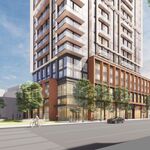I guess I'm in the camp that believes in less design for our parks, not more. I like being out on the Leslie Street Spit - not that it's creation was at all natural, mind you [...]
... which sort of proves my point that in urban settings what appears to be 'wild' can in fact be very artificially created, or at the very least designed in such a way that allows urban strollers to accept the artifice of 'wildness'... and I don't mean 'artifice' in a bad way, on the contrary. There is nothing more planned and deliberate than a messy English garden or the 'wild' English style of landscaping, for example, as opposed to the formal French style which to the naked eye might seem more planned even though it isn't. The techniques and aesthetic are different but the level of design simply isn't.
Again, where we differ is the notion that untouched wilderness can or should exist in the city. I'm not so sure. As you mentioned, very expensive mansions have already intruded, for starters. Maybe it's preferable to gain control of it now before more is lost, to make it accessible in parts (where possible and where appropriate), and to integrate it with the city rather than keeping it separate and 'secret', as it erodes away over time. Again, I'm not suggesting the whole thing be over-designed (souvenir shops and funiculars etc) but part of grand design is vision, and I think there could be a little more of this for what are truly very undervalued assets in Toronto.
To my mind the Niagara Parkway seems to strike a pretty nice balance between stepping in and keeping out in just the right measure when it comes to beautifying the river gorge in parts, preserving wild 'untouched' areas, providing access, and promoting/validating the entire overall asset. Again, I think Stanley Park does it well too.
... and Lenser, I do understand your point about eco-systems and so on, and I do agree that a good design plan for such an asset as the ravine system must take those things into consideration!




